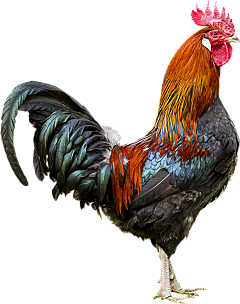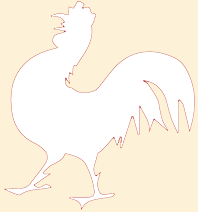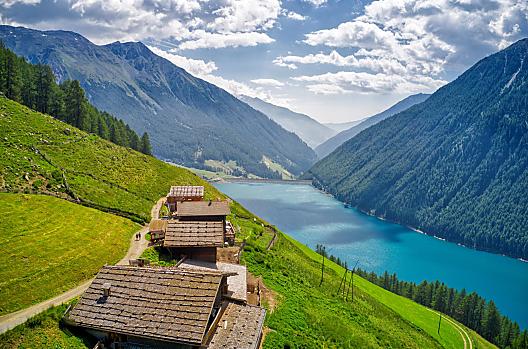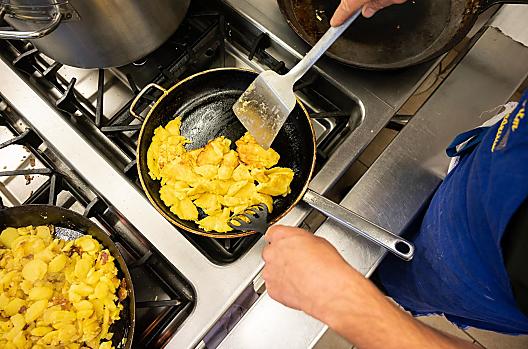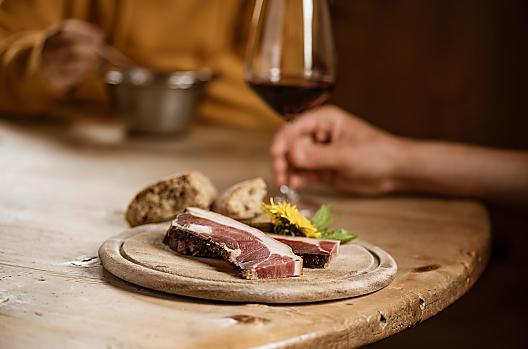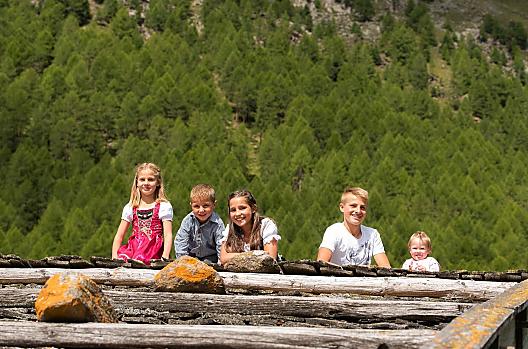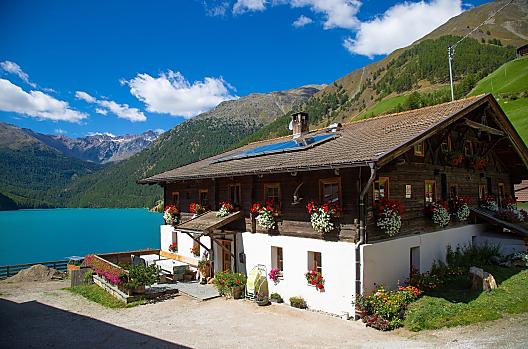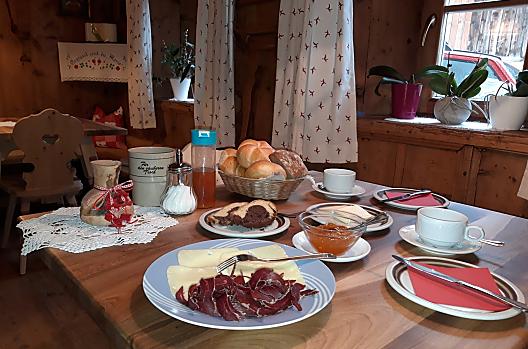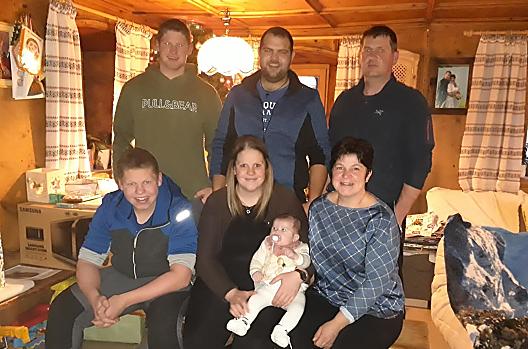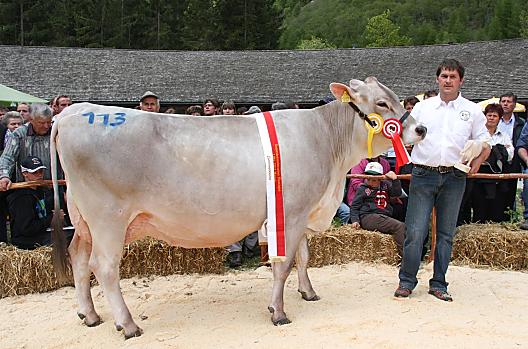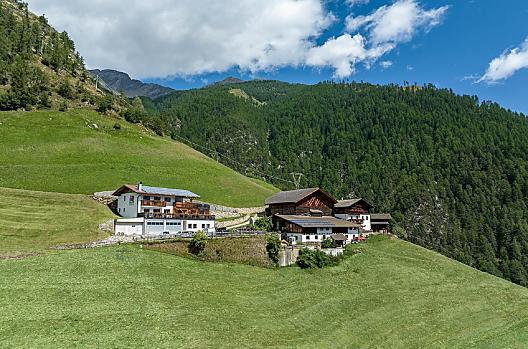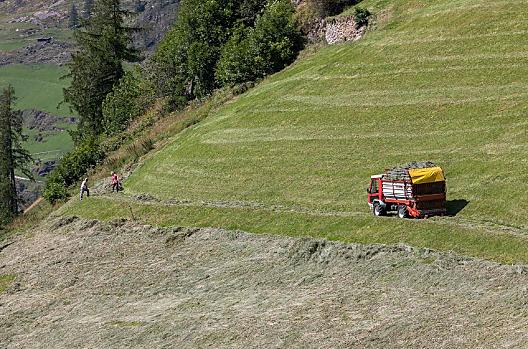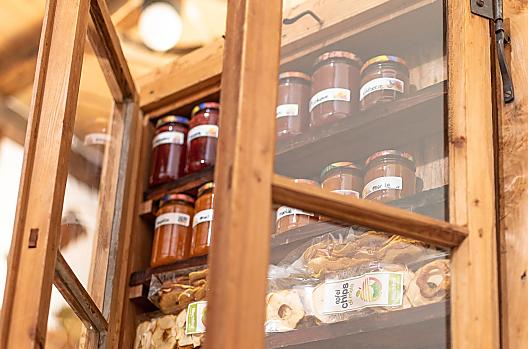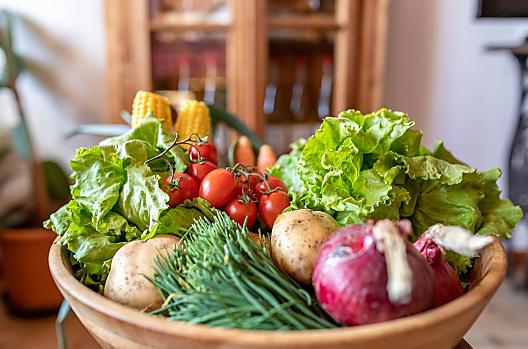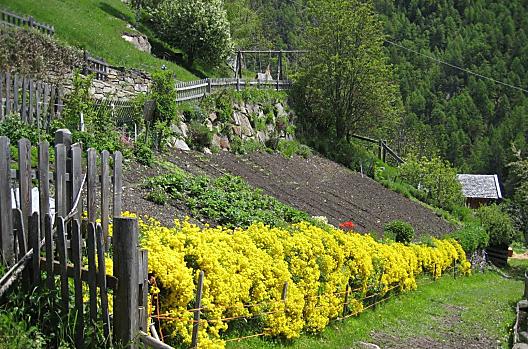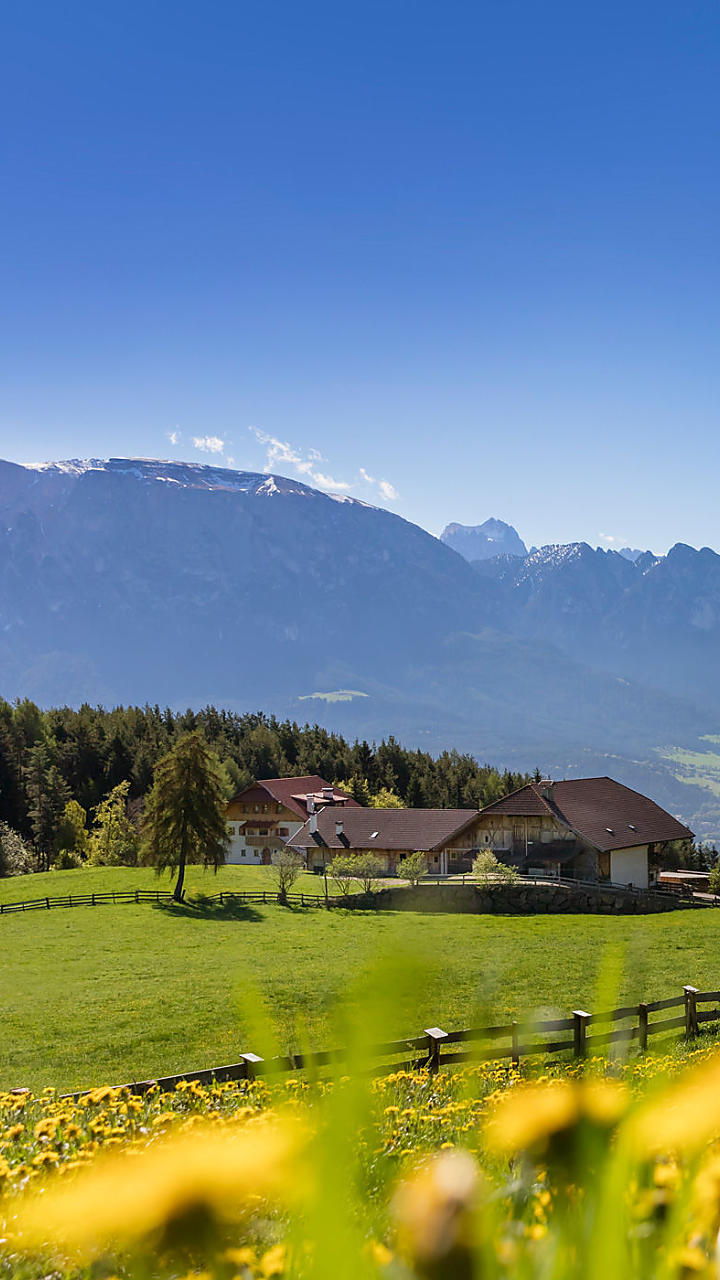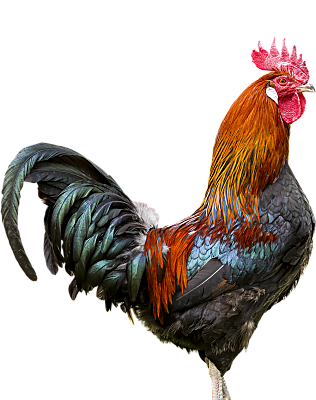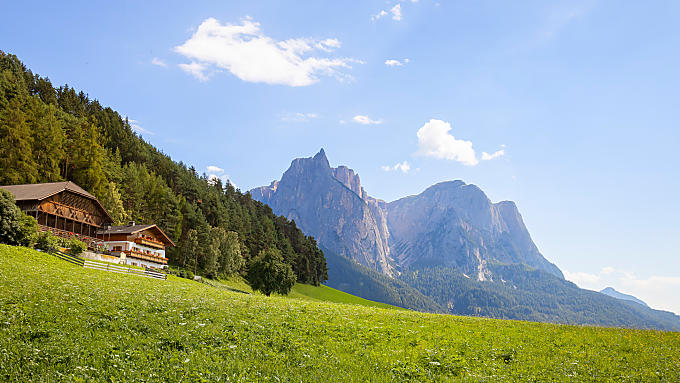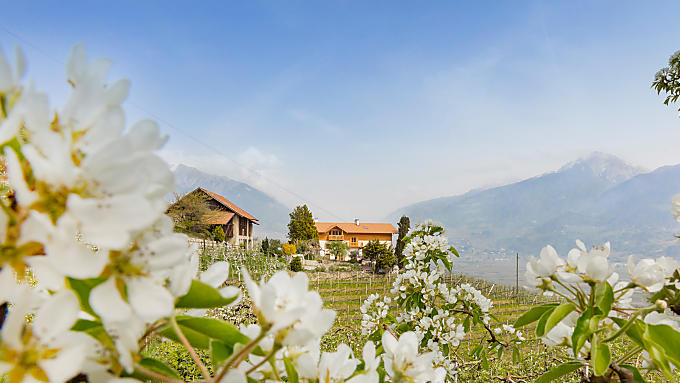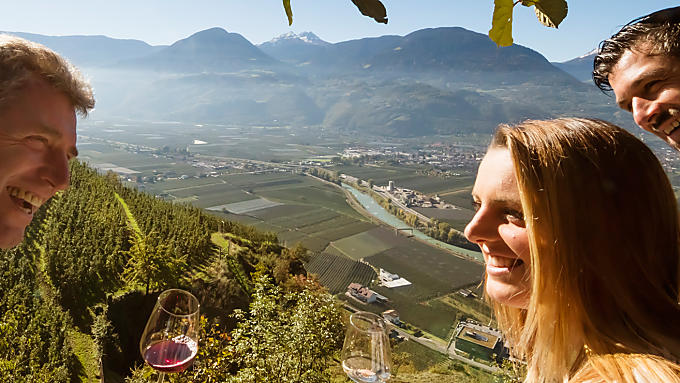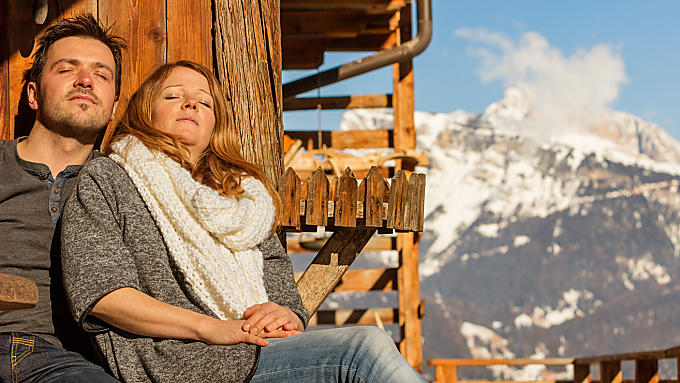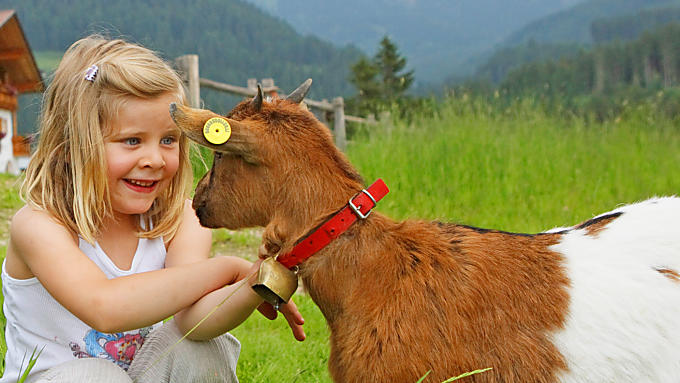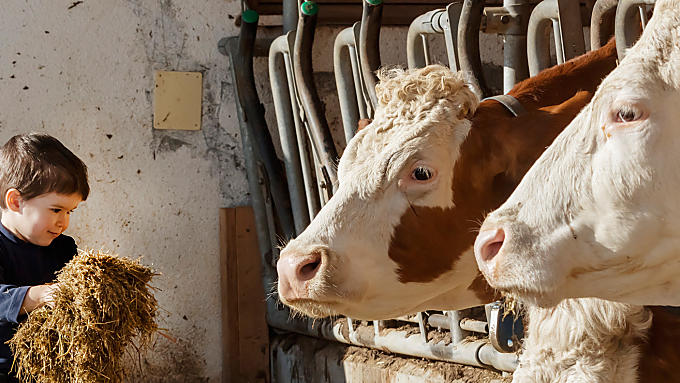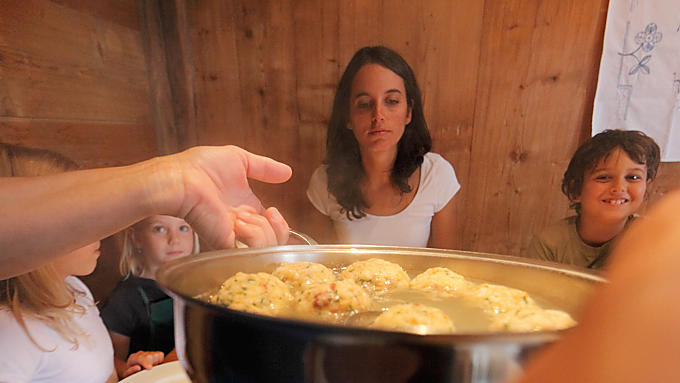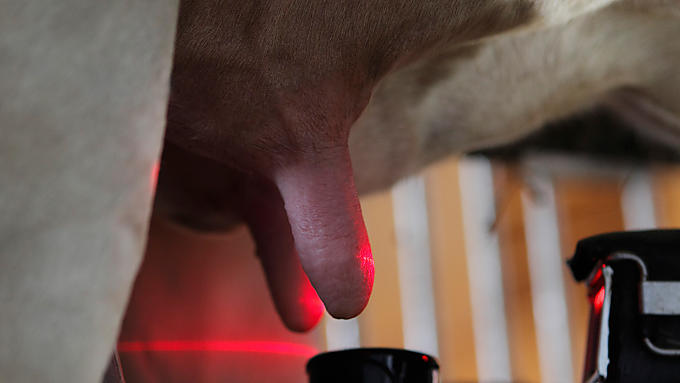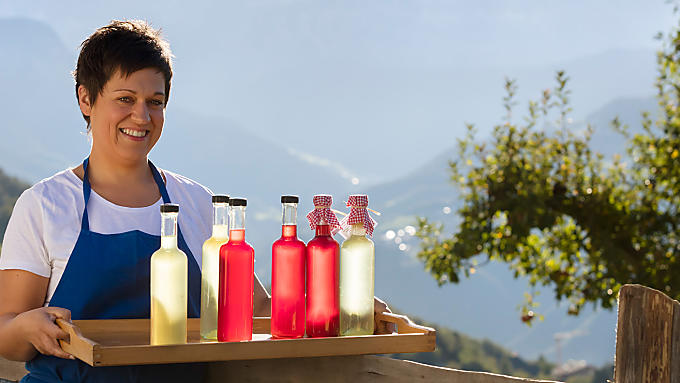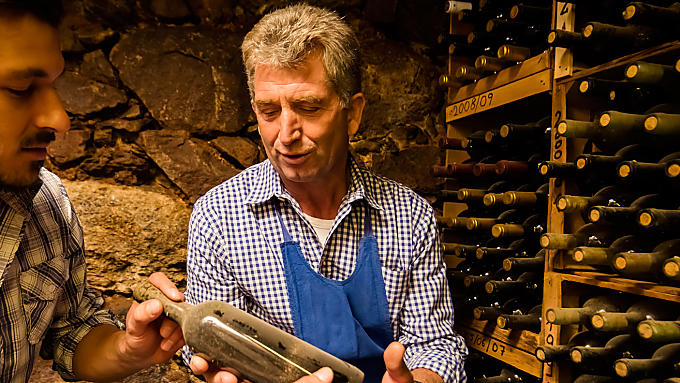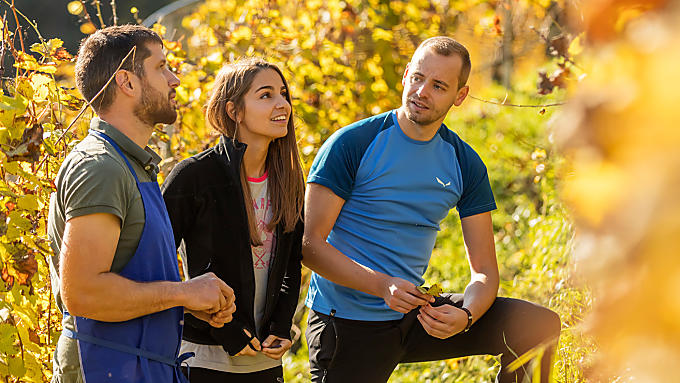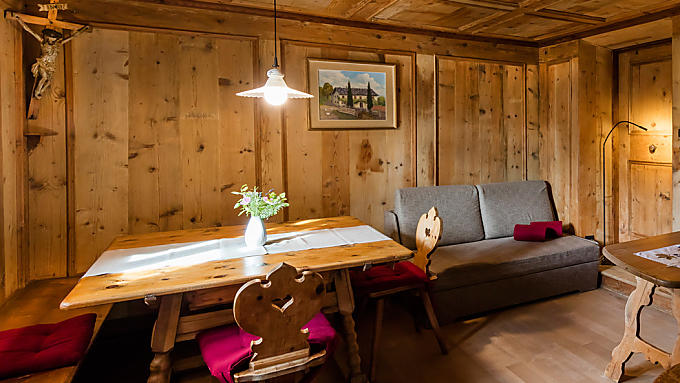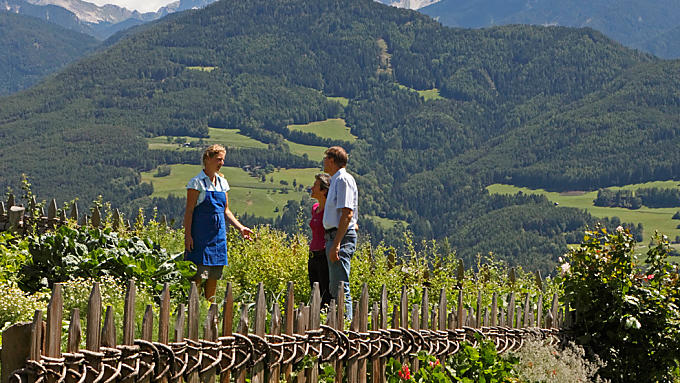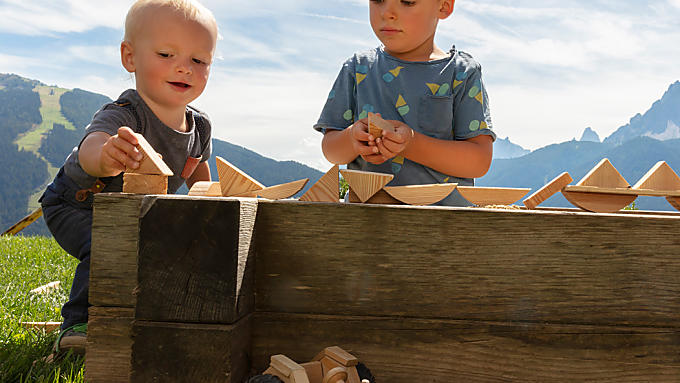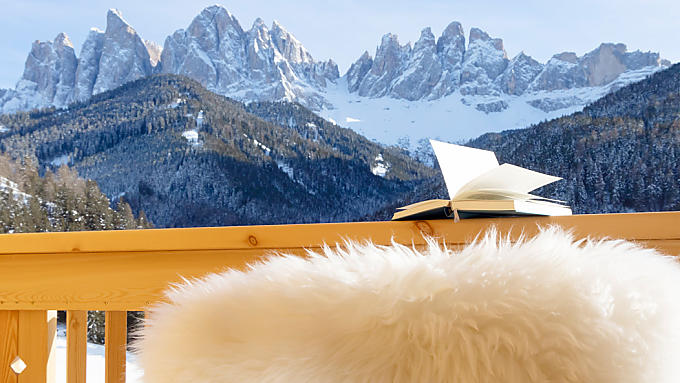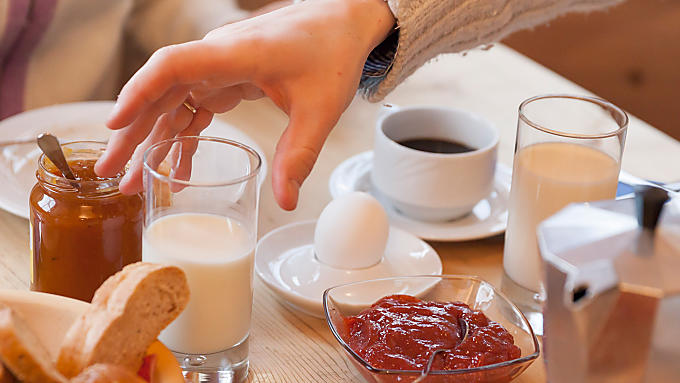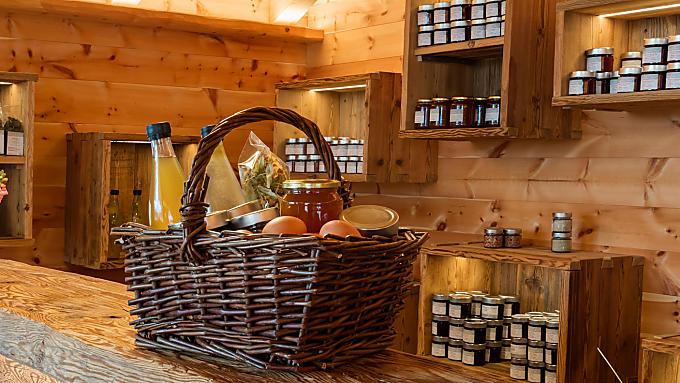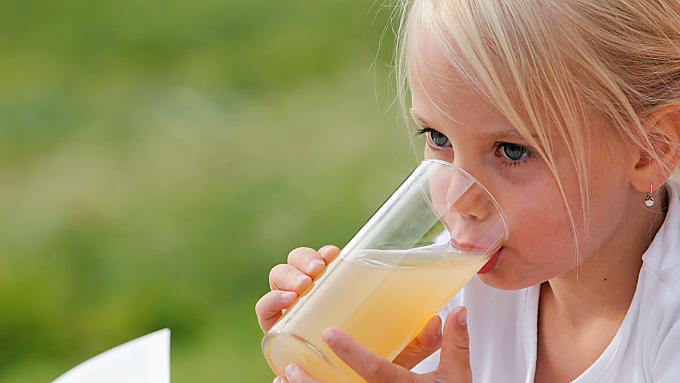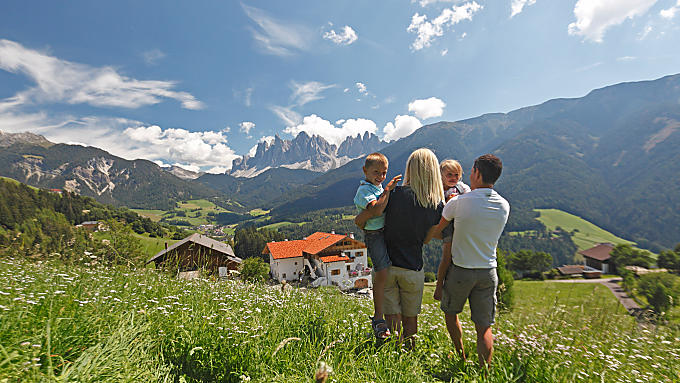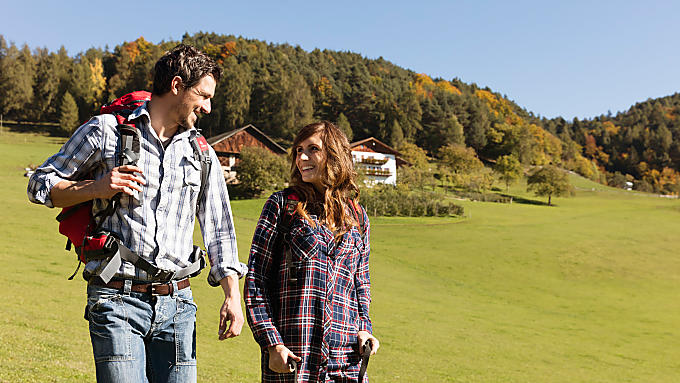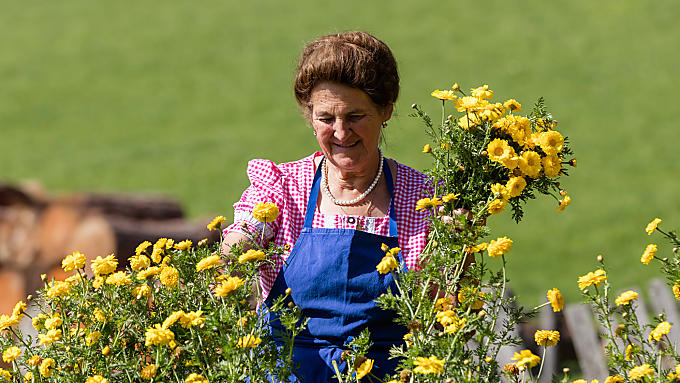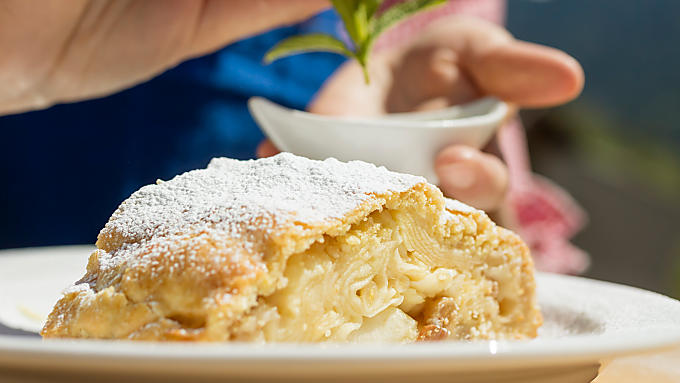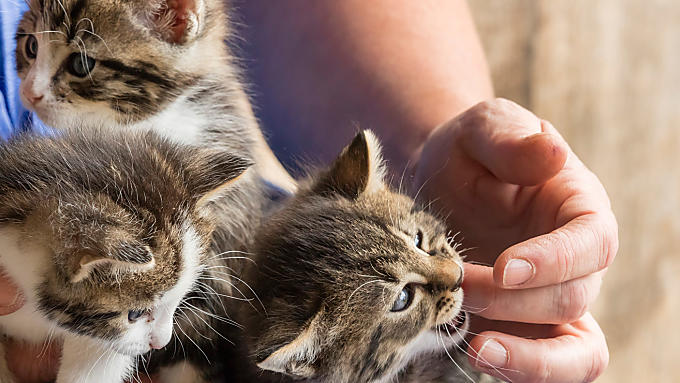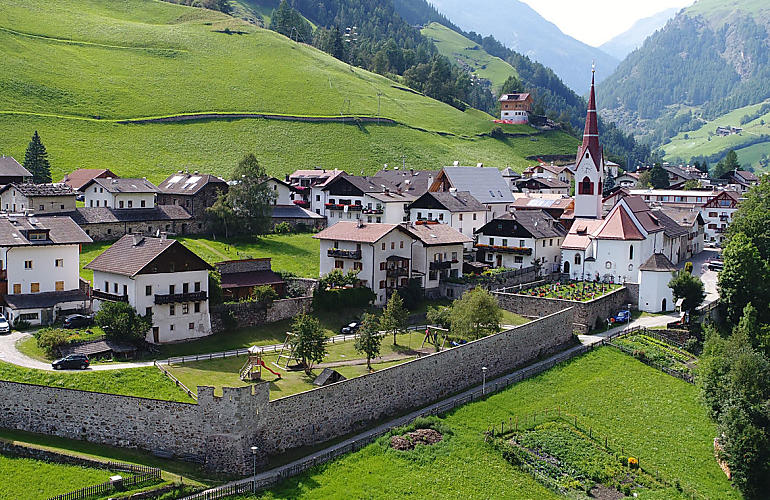
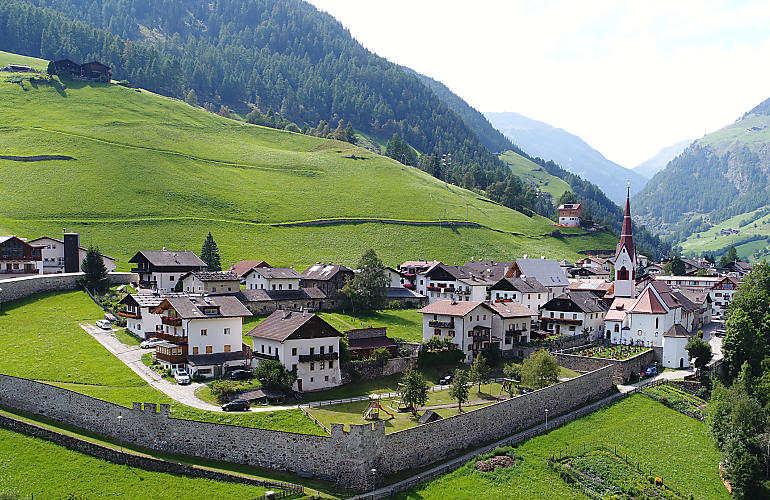
The glacial valley
Holiday location
Farm Holidays in Schnals
A Farm Holiday in Schnals is a varied one: unspoilt nature to follow the traces of Ötzi the ice man in, a glacier for skiing on and age-old traditions to experience.
There are not many valleys in the Alps that feature so many contrasts as Schnalstal valley – between its mild climate and wild glacial, apple trees and vineyards and cattle farming. Farm Holidays may be had in all villages of Schnalstal valley: in Karthaus, Katharinaberg, Kurzras, Unser Frau and Vernagt. Schnalstal valley, a side valley to the left of the Vinschgau, stretches over 22 kilometres and is famous for its beautiful landscape, which has been the setting for lots of advertisements and films.
A Farm Holiday in Schnals is a varied one: unspoilt nature to follow the traces of Ötzi the ice man in, a glacier for skiing on and age-old traditions to experience.
There are not many valleys in the Alps that feature so many contrasts as Schnalstal valley – between its mild climate and wild glacial, apple trees and vineyards and cattle farming. Farm Holidays may be had in all villages of Schnalstal valley: in Karthaus, Katharinaberg, Kurzras, Unser Frau and Vernagt. Schnalstal valley, a side valley to the left of the Vinschgau, stretches over 22 kilometres and is famous for its beautiful landscape, which has been the setting for lots of advertisements and films.
Ötzi, the mummy found in the ice in 1991 at Tisenjoch in the Ötztal Alps between the Finail and Similaun mountain peak, contributed towards making the place so well known.
Keen hikers can pick from easy tours starting right from their holiday flat or room in Schnals and more challenging glacier tours, such as to the Hintere Schwärze, Hohe Wilde or Similaun peaks.
Ancient farmsteads
There is hardly any other place where so many mountain farmhouses have kept their original appearance as in Schnals. Some have defied the ravages of time on their steep slopes for over 700 years and are lovingly maintained, as their colourful farm gardens and flowers on the narrow balconies will atttest.
One of these farms is Oberniederhof in Unser Frau. The original building used to be owned by the Prince Regnant of Tirol, Heinrich von Böhmen, for a while, and even served as a prison. These days this listed farmhouse holds 'Schule am Bauernhof' courses for children and rears local, endangered animal breeds.
The well-known Finailhöfe farmsteads are in the same village at an altitude of 1,953 metres, with four wooden buildings from the 15th and 16th centuries. These used to be the highest-lying grain farms in the Alps, but after the mid-20th century, their fields of grain were turned into meadows.
Unser Frau features a church of pilgrimage and an ArcheoParc allowing insight into the Neolithic Age and the life of Ötzi, the glacier mummy, which are worth a visit, too. A 3D archery trail may also be found at Moarhof farm in Katherinaberg.
Transhumance as a cultural heritage
Staying in a holiday flat or room in Schnals means gaining insight into work on the farm. In summer, you can't miss the hay-making on the meadows. Farmers don't always succeed in bringing hay into the barns while it's dry, so they pile it up in conspicuous columns on the field. An age-old tradition is driving sheep. For hundreds of years, sheep from Schnals and the slopes of the Sonnenberg near Schlanders have been driven 44 kilometres over the Alps in mid-June to the pastures where they spend the summer in deepest Ötztal in Austria. The 4,000 sheep and goats driven by dogs and shepherds back down to the valley in mid- September is a real spectacle. In 2011, this transhumance was declared an intangible cultural heritage by UNESCO in Austria. The return of the animals is celebrated with a large party on Vernagt reservoir with music, dancing and refreshments, all specially prepared for the occasion according to tradition.
Surrounded by 3,000-metre-high mountains, Vernagtsee reservoir is a popular destination for excursions in summer, too, when glacial sediment on the bed of the lake turns the water emerald green. Ötzi Rope Park near the lake makes for an entertaining afternoon for the whole family.
Ötzi, the mummy found in the ice in 1991 at Tisenjoch in the Ötztal Alps between the Finail and Similaun mountain peak, contributed towards making the place so well known.
Keen hikers can pick from easy tours starting right from their holiday flat or room in Schnals and more challenging glacier tours, such as to the Hintere Schwärze, Hohe Wilde or Similaun peaks.
Ancient farmsteads
There is hardly any other place where so many mountain farmhouses have kept their original appearance as in Schnals. Some have defied the ravages of time on their steep slopes for over 700 years and are lovingly maintained, as their colourful farm gardens and flowers on the narrow balconies will atttest.
One of these farms is Oberniederhof in Unser Frau. The original building used to be owned by the Prince Regnant of Tirol, Heinrich von Böhmen, for a while, and even served as a prison. These days this listed farmhouse holds 'Schule am Bauernhof' courses for children and rears local, endangered animal breeds.
The well-known Finailhöfe farmsteads are in the same village at an altitude of 1,953 metres, with four wooden buildings from the 15th and 16th centuries. These used to be the highest-lying grain farms in the Alps, but after the mid-20th century, their fields of grain were turned into meadows.
Unser Frau features a church of pilgrimage and an ArcheoParc allowing insight into the Neolithic Age and the life of Ötzi, the glacier mummy, which are worth a visit, too. A 3D archery trail may also be found at Moarhof farm in Katherinaberg.
Transhumance as a cultural heritage
Staying in a holiday flat or room in Schnals means gaining insight into work on the farm. In summer, you can't miss the hay-making on the meadows. Farmers don't always succeed in bringing hay into the barns while it's dry, so they pile it up in conspicuous columns on the field. An age-old tradition is driving sheep. For hundreds of years, sheep from Schnals and the slopes of the Sonnenberg near Schlanders have been driven 44 kilometres over the Alps in mid-June to the pastures where they spend the summer in deepest Ötztal in Austria. The 4,000 sheep and goats driven by dogs and shepherds back down to the valley in mid- September is a real spectacle. In 2011, this transhumance was declared an intangible cultural heritage by UNESCO in Austria. The return of the animals is celebrated with a large party on Vernagt reservoir with music, dancing and refreshments, all specially prepared for the occasion according to tradition.
Surrounded by 3,000-metre-high mountains, Vernagtsee reservoir is a popular destination for excursions in summer, too, when glacial sediment on the bed of the lake turns the water emerald green. Ötzi Rope Park near the lake makes for an entertaining afternoon for the whole family.
Farm search
Holiday farms in Schnals
3 reasons
A holiday in Schnals
Transhumance heritage
and ancient farms
Where Ötzi the Iceman
was found
No lack of snow
on Schnalstal glacier
Pfossental valley and Schnals glacier
On a Farm Holiday in Schnals, a trip to Pfossental is well worth it. In this side valley at the heart of Texelgruppe Nature Park, there are not just extensive walks to be done, but there is plenty of peace and quiet and unspoilt nature, as the ice and water shaped it over hundreds of years.
On a Farm Holiday in Schnals, a trip to Pfossental is well worth it. In this side valley at the heart of Texelgruppe Nature Park, there are not just extensive walks to be done, but there is plenty of peace and quiet and unspoilt nature, as the ice and water shaped it over hundreds of years.
There are no villages in this valley, but a few typical farmsteads, including Eishof farm at 2,076 metres in altitude, which was inhabited until 1897 and is today used as a mountain pasture.
Schnalstal glacier is great for a day's skiing in winter. Hochjochferner mountain provides excellent conditions for skiing, snowboarding, cross-country skiing and sledging as of September. Those looking for gentler sporting activities can choose between lots of walking routes or discover the area on snow shoes.

